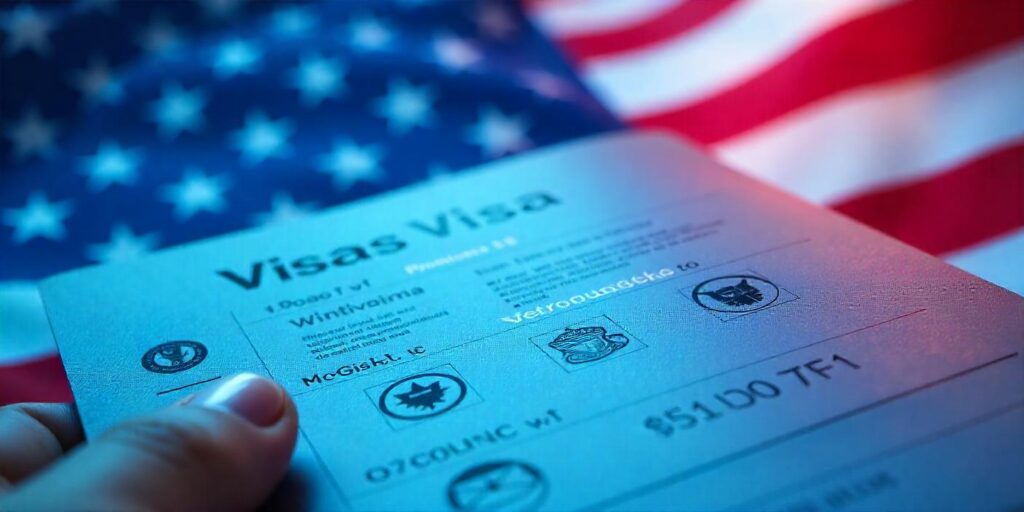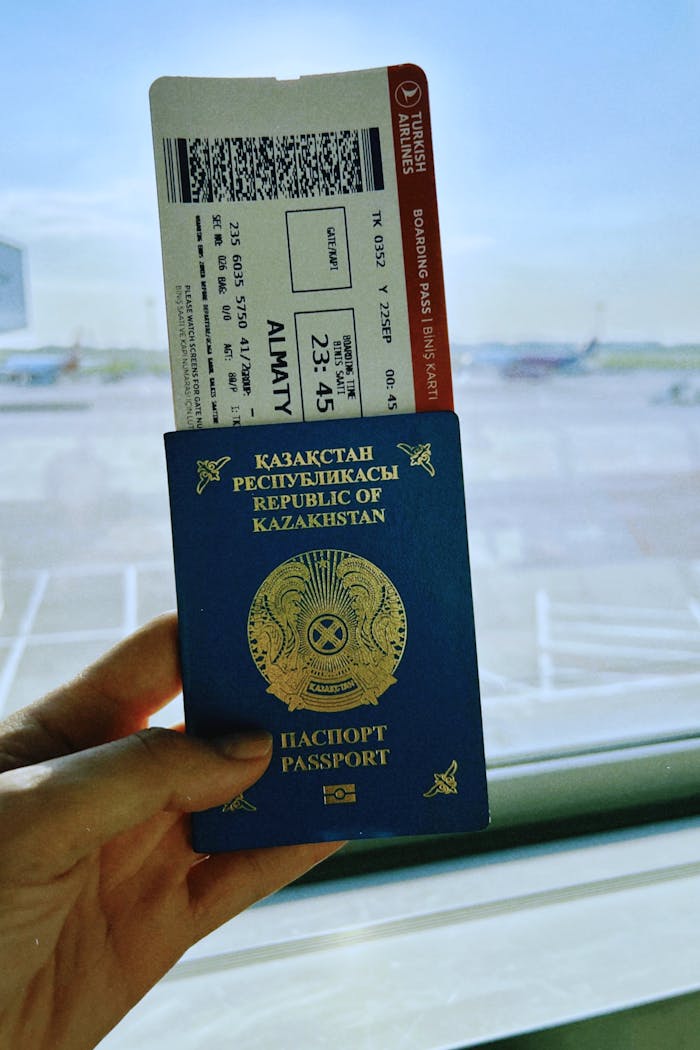Understanding Non-Immigrant Visas: Who’s Eligible and How to Apply
When it comes to visiting, studying, or working temporarily in a foreign country, a non-immigrant visa is often required. Unlike immigrant visas, which are for those intending to live permanently in a country, non-immigrant visas are for short-term stays. If you’re looking to travel to the United States, the UK, Canada, or another popular destination for a set period, understanding non-immigrant visas, who is eligible, and how to apply is crucial.
This blog will cover:
- What is a Non-Immigrant Visa?
- Types of Non-Immigrant Visas
- Eligibility Requirements
- How to Apply for a Non-Immigrant Visa
- Key Tips for a Successful Application
1. What is a Non-Immigrant Visa?
A non-immigrant visa is a document that permits an individual to enter a country temporarily for specific reasons, such as tourism, work, study, or medical treatment. It is issued by the country’s consulate or embassy and specifies the purpose, duration, and sometimes restrictions for the stay.
Non-immigrant visas are ideal for people who intend to return to their home country once their purpose of visiting is fulfilled. The length of stay, privileges, and requirements vary depending on the country and visa type.
2. Types of Non-Immigrant Visas
Non-immigrant visas are issued for several purposes, each with its own specific category. Here are some of the most common non-immigrant visa types:
- Tourist Visas (B-2 Visa)
For those looking to explore the sights, spend time with friends or family, or take a short vacation. - Business Visas (B-1 Visa)
For individuals traveling for short-term business purposes like meetings, conferences, or negotiations. - Student Visas (F-1, M-1, or J-1 Visas)
Granted to students pursuing academic or vocational studies. The F-1 visa is for academic studies, the M-1 visa for vocational studies, and the J-1 for exchange programs. - Work Visas (H-1B, L-1, O-1, etc.)
These are for temporary employment in various fields. The H-1B visa is for skilled professionals, while the L-1 visa allows intra-company transfers. The O-1 is reserved for individuals with extraordinary abilities in arts, sciences, business, or athletics. - Transit and Crew Visas (C-1, D Visas)
The C-1 visa allows travelers to pass through a country en route to another destination, while D visas are given to airline and ship crew members. - Medical Treatment Visas (B-2 Visa)
Allows travelers to visit for medical treatment. The applicant may need to prove they cannot receive the necessary treatment in their home country. - Religious Worker Visa (R-1)
For religious workers traveling to perform religious duties within their organization.
Each type of non-immigrant visa is specific to its purpose. Applying for the right visa is essential to ensure compliance with regulations.

3. Who is Eligible for a Non-Immigrant Visa?
Eligibility for non-immigrant visas depends on factors such as nationality, the purpose of travel, and ability to prove intent to return home. Here’s a breakdown of general eligibility criteria:
- Purpose of Visit:
Your purpose must align with one of the non-immigrant visa types. For instance, if you’re visiting for tourism, you’d apply for a tourist visa, not a student visa. - Proof of Intent to Return Home:
Most non-immigrant visas require proof that you plan to return to your home country. This can include employment commitments, family ties, property ownership, or other connections that demonstrate ties to your country. - Financial Stability:
Applicants often need to show financial resources to cover their expenses during their stay. This is to prevent reliance on the host country’s resources. - Health Requirements:
Some countries require a medical examination to ensure the applicant doesn’t pose a health risk. - Clean Criminal Record:
Many countries ask for a police clearance certificate to ensure the applicant has no criminal background. - Specific Requirements by Visa Type:
Some visas have unique eligibility requirements. For example, an H-1B work visa typically requires a job offer from a sponsoring employer, while a student visa often requires enrollment in a recognized institution.
4. How to Apply for a Non-Immigrant Visa
The application process for a non-immigrant visa generally includes the following steps:
Step 1: Determine Your Visa Type
Understanding which visa type best suits your travel purpose is the first step. Most government immigration websites have a guide that helps applicants determine the correct visa type.
Step 2: Complete the Online Application Form
For U.S. visas, this involves filling out the DS-160 form online. Other countries, like Canada, the UK, and Australia, have their own application forms. This step usually requires:
- Your passport details
- Information on your travel plans
- Contact information
- Background and security questions
Step 3: Gather Required Documents
Every non-immigrant visa application requires supporting documents. These may include:
- A valid passport with an expiration date beyond the intended stay.
- Passport-sized photographs according to specifications.
- Proof of financial ability (such as bank statements or sponsorship letters).
- Proof of ties to the home country, like an employment letter or property ownership documents.
- Invitation letter (if applicable) from a friend, family member, or institution in the destination country.
For work visas, additional documents such as job offer letters or employment contracts may be required. For student visas, an acceptance letter from the educational institution is needed.
Step 4: Pay the Application Fee
Each non-immigrant visa has a specific fee. Payment methods vary, and some countries may ask for additional fees, such as service charges. Be sure to keep the payment receipt as you’ll need it for the next step.
Step 5: Schedule a Visa Interview (If Required)
An in-person interview is required for most visa applicants, though some countries may waive this for certain individuals. During the interview:
- Dress appropriately and arrive on time.
- Answer questions confidently and honestly. Questions will typically focus on your purpose of visit, financial stability, and ties to your home country.
- Present original documents when asked.
The interviewing officer will decide based on your answers and supporting documents.
Step 6: Attend the Visa Interview
The visa interview is typically straightforward, with questions around the purpose of your travel, your planned activities, and your financial and personal connections to your home country. Be prepared to explain why you are not planning to immigrate and will return after your visit.
Step 7: Wait for Visa Processing
Visa processing times vary depending on the country and visa type. Some may be processed within a few days, while others might take several weeks or even months. Be sure to check the estimated processing times.
Step 8: Receive Your Visa and Travel
If approved, you will receive a visa stamp in your passport. Be mindful of the visa’s validity period and ensure you adhere to any restrictions, such as travel limits, while in the country.
5. Tips for a Successful Non-Immigrant Visa Application
Applying for a non-immigrant visa can be complex, but following these tips can increase your chances of success:
- Double-check documents: Ensure all documents are up-to-date and meet the visa’s requirements.
- Be honest and transparent: Misrepresentations or inconsistencies can lead to application denials and possible bans.
- Prepare for the interview: Practicing potential questions can help you answer confidently.
- Avoid last-minute applications: Some visas, like the U.S. H-1B, have annual caps, so apply as early as possible.
Applying for a non-immigrant visa may seem challenging, but with thorough preparation, understanding of requirements, and a little patience, you can navigate the process smoothly and get closer to your travel goals. Whether you’re looking to study, work, or explore, a non-immigrant visa opens the door to incredible opportunities and experiences around the world.



4 thoughts on “Non-Immigrant Visas”